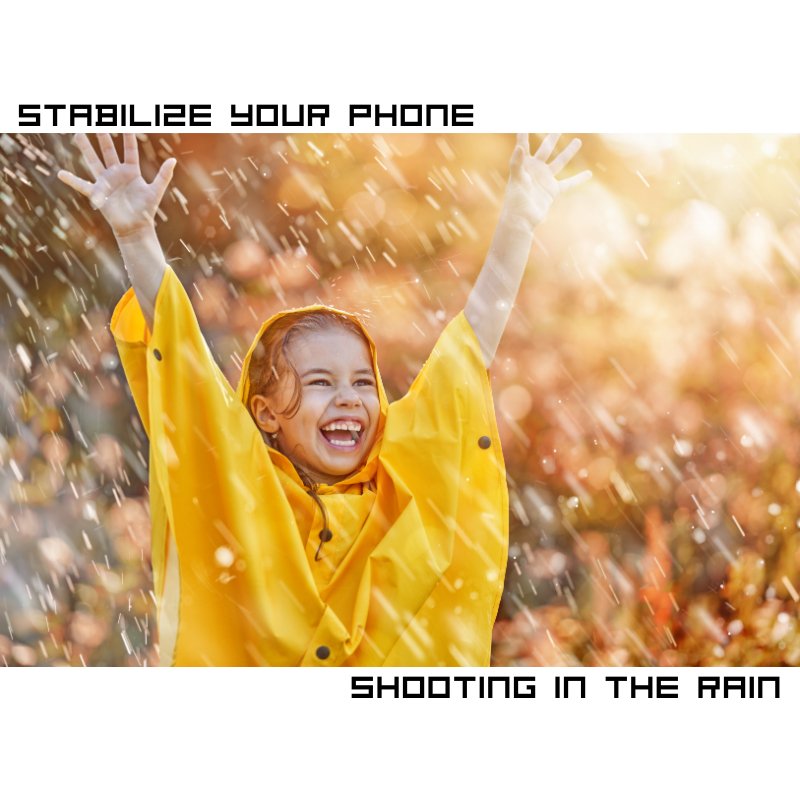Shooting in the rain with your smartphone may seem challenging, but it opens many creative possibilities. The reflections, mood, and textures that rain provides can turn ordinary scenes into dramatic visuals. With the right approach and techniques, you can capture great shots even in wet conditions. Here’s a practical guide to help you make the most of rainy-day shooting with your smartphone.

1. Prepare Your Gear: Keep Your Phone Safe
Before heading into the rain, ensure your phone is protected from water.
Many phones are water-resistant, but extra precautions help during long shoots.
-
Waterproof case: A good case blocks water from ports and the camera.
-
Plastic zip-lock bag: No case? Use a bag. Cut a hole for the lens and seal the rest to keep the phone dry.
-
Keep hands dry: Wipe drops with a microfiber cloth. Fingerless gloves improve control in the wet.
2. Make the Most of the Rainy Mood
Rain brings mood and atmosphere. Work with the weather, not against it.
-
Reflections: Streets and windows act like mirrors. Shoot from low angles to enhance the effect.
-
Raindrops: Try close-ups on glass, cars, or leaves. Droplets can magnify tiny details.
-
Umbrellas and people: Coats and umbrellas add story and depth. Silhouettes or light motion blur emphasize the wet scene.
3. Take Advantage of Diffused Lighting
Overcast skies act like a giant softbox. Shadows soften, which flatters portraits and landscapes.
Golden hour in the rain: Warm light plus rain can glow beautifully.
Use available light: Street lamps, neon, and headlights add drama. The phone flash is often too harsh, so prefer natural or ambient light.
4. Stabilize Your Shots
Cold, wet hands make holding steady harder. Stabilization prevents blur.
-
Use a tripod: A compact phone tripod (e.g., T10F Tripod) keeps shots sharp in low light or long exposures.
-
Use a 3-axis stabilizer: For video, a gimbal such as the Smart Cyclone delivers smooth footage while you walk.
-
No gear? Brace the phone on a railing or bench to reduce shake.
5. Use the Right Settings
Phones auto-adjust, but small tweaks help on rainy days.
-
HDR: Balances dark clouds and bright reflections.
-
Manual focus: Raindrops can fool autofocus. Tap to focus where you want.
-
Exposure: Wet highlights may trick the meter. Tap a bright area and drag the slider to fine-tune.
6. Post-Processing Magic
Editing reveals the rain’s beauty.
-
Increase contrast: Make rain and reflections pop.
-
Sharpen slightly: Define droplets and wet surfaces.
-
Adjust temperature: Cooler tones feel moody. Warmer tones feel nostalgic or cinematic.
Apps like Lightroom, Snapseed, or VSCO make these tweaks quick.

7. Creative Rain Videos
-
Slow motion: Capture falling or splashing drops in slo-mo.
-
Time-lapse: On a tripod, record rain, umbrellas passing, or shifting clouds.
-
Audio: Clear sound matters. A mic such as MPC-1 improves speech and ambience.
8. Keep Yourself Dry and Comfortable
Stay warm to stay focused. Wear a rain jacket and waterproof boots.
Carry an umbrella for yourself while the phone stays on a tripod or gimbal.
Conclusion
Rain shooting needs a bit more prep, yet the results can be magical.
Reflections, soft light, and mood make both city and nature scenes shine.
With protection, the right tools, and simple techniques, your phone can capture rainy-day photos and videos that tell a story.
When the forecast turns wet, don’t shy away—embrace it and create.


Share:
How to Take Perfect Selfies and Videos with a Selfie Stick
How to Capture Cinematic Shots with Your Smartphone